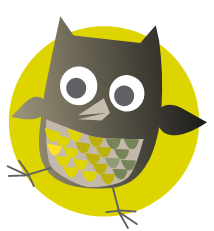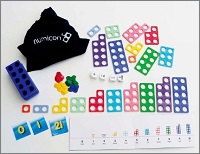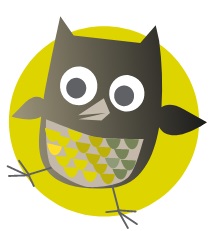It can be hard making the jump from counting and ordering numbers to actually calculating with them. In my third and final post, I will outline how to use Numicon to practically introduce the crucial concepts of addition and subtraction to your child.
These activities are for children who know the Numicon shapes by number without needing to count the holes. If your child isn’t quite there yet, you could try these ordering and counting activities instead.
My three year old is not ready for this stage yet, so her big sister (age 6) had a go with me. Here are some of the activities we tried out that were most successful. These activities use resources from the 1st Steps with Numicon at Home Kit, but if you don’t own the kit you can still follow along with these free cut-out Numicon shapes.
1. Number towers
This is a good activity to gently introduce the idea of adding two numbers together to make a bigger number. Have a go at making number towers like this:
- Ask your child to choose a shape to put on the Numicon 10×10 baseboard. They should fill the holes of the shape with pegs so that it locks into place.
- Choose Numicon shapes to fit on top to make the same shape. See if your child can find different combinations of pieces to make the same shape stacking them on top of the previous combinations.
- Model the language you want your child to use during this activity, such as more, less, add, fit, and same. Encourage them to use the word together (a key word in addition) to explain what they are doing. For example, ‘I am putting two and four together to make six.’
This activity helps your child see that numbers can be made up of multiple smaller numbers, and will give them a go at adding different numbers together to get a total.
2. Number bonds
Following on from this activity, we explored number bonds to 10. We did this by choosing pairs of Numicon shapes to add together to make a total of 10:
- Set out a shape that takes up 10 pegs.
- Model for your child how you choose two shapes that fit together to make 10.
- Encourage your child to continue choosing pairs of shapes to make the ten shape.
- Remember to use the mathematical language – together, and, add, makes, equals, the same, and so on.

3. Introducing subtraction
My first activity to introduce subtraction involved using a ‘feely bag’ (an big bag that you can’t see through). As with addition, it helps if your child is already familiar with Numicon shapes when you introduce the idea of subtraction because otherwise the activity might seem a bit confusing.
- Put lots of Numicon shapes into the feely bag
- Ask your child to take out two shapes at random.
- Put the smaller shape on top of the bigger shape, and encourage your child to count the difference between the two shapes (i.e. to count the holes in the bigger shape that are not covered).
- Your child can check their counting by choosing the correct Numicon shape to cover all the remaining holes.
- Encourage your child to explain what is happening using mathematical language – the difference between, smaller than, leaves, equals, and so on.
At this early stage, we focus on the difference between shapes in order to subtract. This concept is nice and easy to visualise so is great for younger learners.
4. Taking away
The other way to explore subtraction with Numicon is by taking away part of a shape. For example, you could:
- Choose a shape and pretend to take away 1 from its value by covering the hole with your finger.
- Ask your child to find the shape that matches the pattern that is left. For example, if the original shape had a value of 6 and you held your finger over a hole, your child would need to find a shape with a value of 5.
- Try taking away 1 from every Numicon shape.
- You can build on this by taking away larger numbers (for example, holding your finger over two holes) when your child is confident with the process of taking away 1.
5. Reading and listening to songs
On top of these quite formal activities, you can also teach your child about adding and taking away through conversation, books, play, and songs. My little girl loves singing along to the songs in the Numicon At Home kit and holding up her fingers to count along! We have tried to make these songs part of her bedtime routine to help her get used to counting.
When reading a book or listening to a song, try these tips to practise early maths skills:
- Talk about the pictures – explore shapes, patterns, size, colours.
- Count the number of a certain type of object on the page.
- Listen out for numbers and then count forwards/backwards from that number.
- Use the Numicon number line as you count, or count using your fingers.
- Try to use mathematical language as much as possible.
Giving your child a chance to practise addition and subtraction using Numicon, as well as incorporating maths into their daily routine through books and songs, will give their early maths skills a real boost. Keep it up and they will be moving on to trickier maths concepts in no time!
Numicon kits for parents
1st Steps with Numicon at Home Kit
Designed specifically to help parents support their children’s maths progression in Foundation Stage and Key Stage 1.
The kit includes a 100-square baseboard, 52 coloured pegs, 32 shapes, 10 numeral cards, three threading laces, picture overlays, a feely bag, an inspiring activity book, and more.
Homework Activities Intervention Resource kit
Especially created for use at home, Homework Activities Intervention Resource kit supports children’s mathematical development and learning outside of school.
The kit includes dice, 60 coloured counters, 21 numeral cards, 30 shapes, a large table-top number line, and more.
Bag of Numicon shapes 1–10
A set of 10 Numicon shapes to practise maths at home.
The tactile, multi-sensory approach helps your child build their mathematical fluency, reasoning, and problem-solving.


